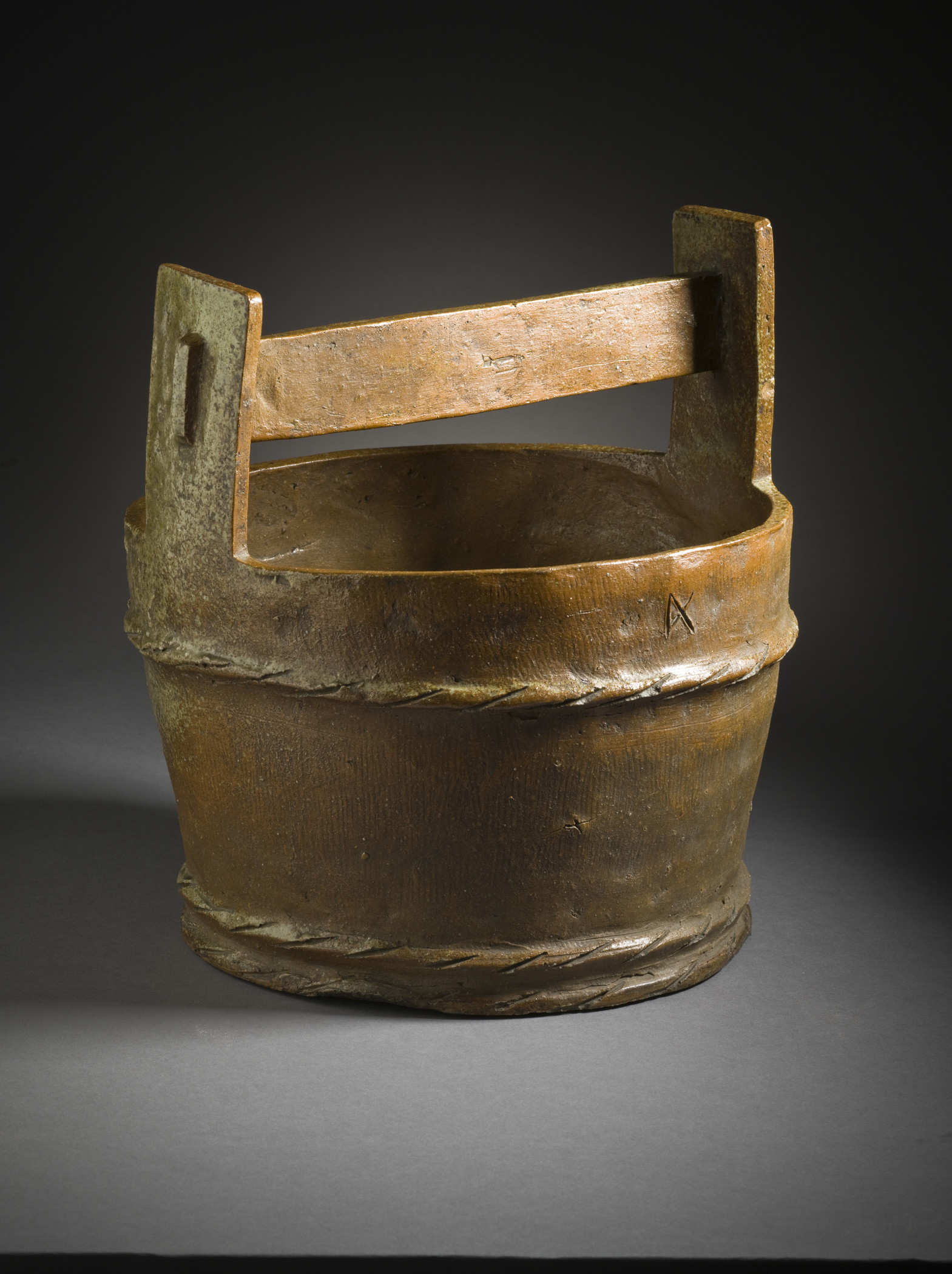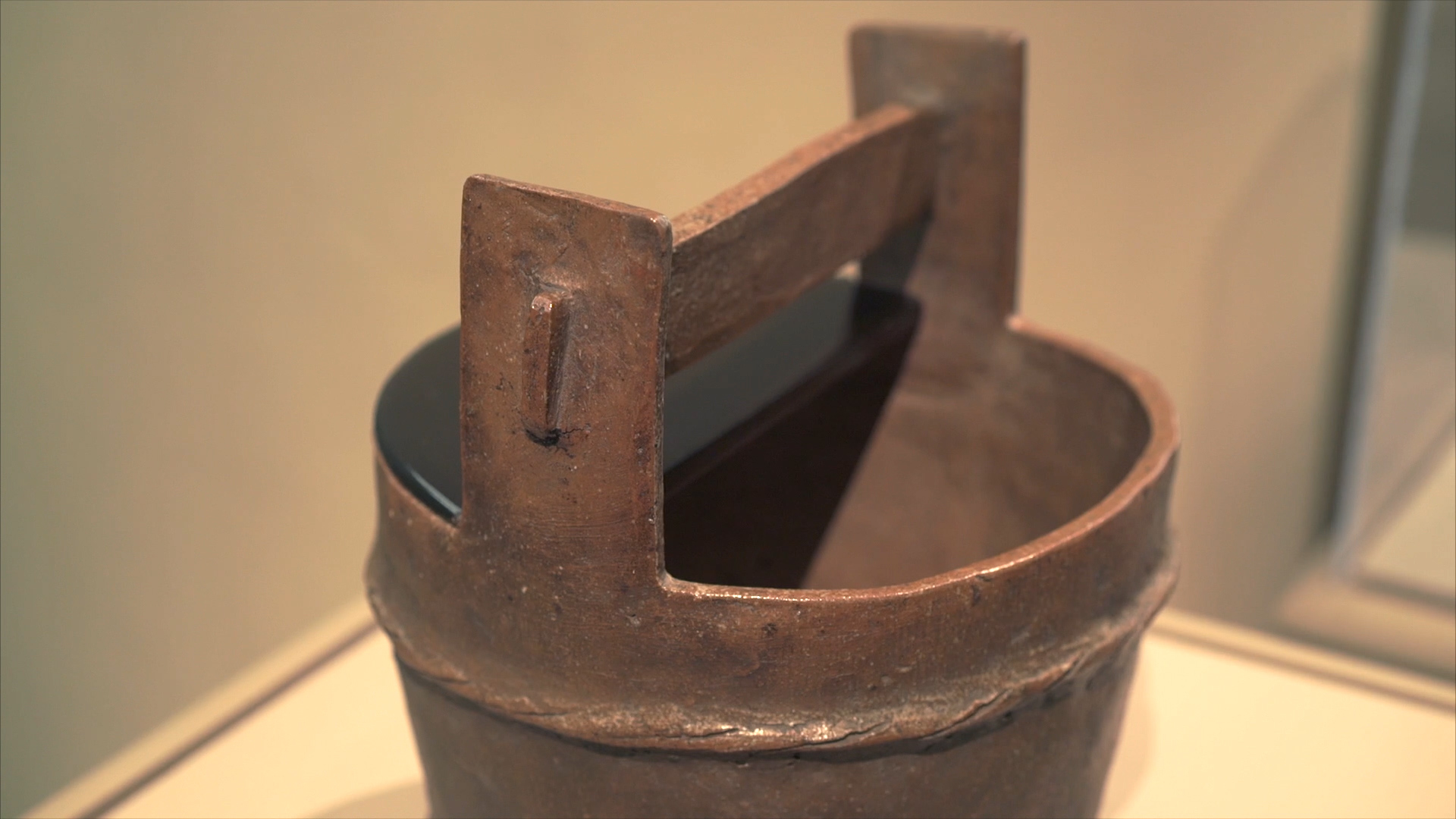Thomas Demand’s photographs and films, typically empty of people, have an uncanny aspect to them, perhaps explained by his process: he shoots images of specially constructed paper models, which are themselves based on photographic images from magazines, books, and other media. Demand, who is among a number of accomplished photographers trained at the Kunstakademie Düsseldorf in Germany, complicates the precedent of photography as documentary practice. The subject of solo exhibitions at the Museum of Modern Art, New York; the Neue Nationalgalerie, Berlin; and LACMA (Thomas Demand: Pacific Sun, 2014–15), Demand lives and works in Los Angeles and Berlin.
For Artists on Art, LACMA’s online video series featuring contemporary artists speaking on objects of their choice from our permanent collection, Demand selected a mizusashi, a cold-water container made for the Japanese tea ceremony, in this case in the form of a wooden bucket. Made during Japan’s Momoyama period (1573–1615), the kiln-fired vessel is representative of Tanba ware, made to this day in the Hyōgo Prefecture, west of Kyoto.
Why did you choose this object?
Why I like this so much is because it makes a very simple daily object into an artwork by means of using a material which is not the original material. It tones things down to an essence. It’s baroque in its minimalism. And that’s a beautiful mental challenge to understand. This kind of extra effort, the extra mile—or in this case it’s probably an extra hundred miles—to make something which is ending up as exactly the same object as you know from your daily practice, but it’s just so much more sophisticated. That’s what I find hugely fascinating.

Describe the water container’s "minimalism."
This simple bucket has the irregularity of something handmade, based on a cheap material like wood. There’s the little string around it to hold the wooden part together, and then, of course, the little strings on the side, the texture of the surface is just very, very . . . I mean, you want to grab that thing, basically.
What do you mean by “baroque”?
In European art history, it’s doing something that is unnecessary, that makes an unbelievable object. In this object here, this kind of modesty . . . in Japan you see it on every corner, this kind of really keeping things low, never showing off—this minimalizing of things, even way before it became fashionable to minimalize things. The glazing is perfectly kind of low-key. It seems to be low-key, but it’s really high technique, a really high sophistication.

Tell us more about this tea vessel’s modesty.
Where you see this most is, of course, the construction. In ceramics you could do any shape, but in the end, it’s just a pot and it could be used as a pot. There’s a massive kind of cultural process behind this, which is not even visible anymore.
Mizusashi (Water Container for Tea Ceremony) in the Form of a Wooden Bucket is on view in the Pavilion for Japanese Art, Level 3. The conversation was edited and condensed for clarity.



